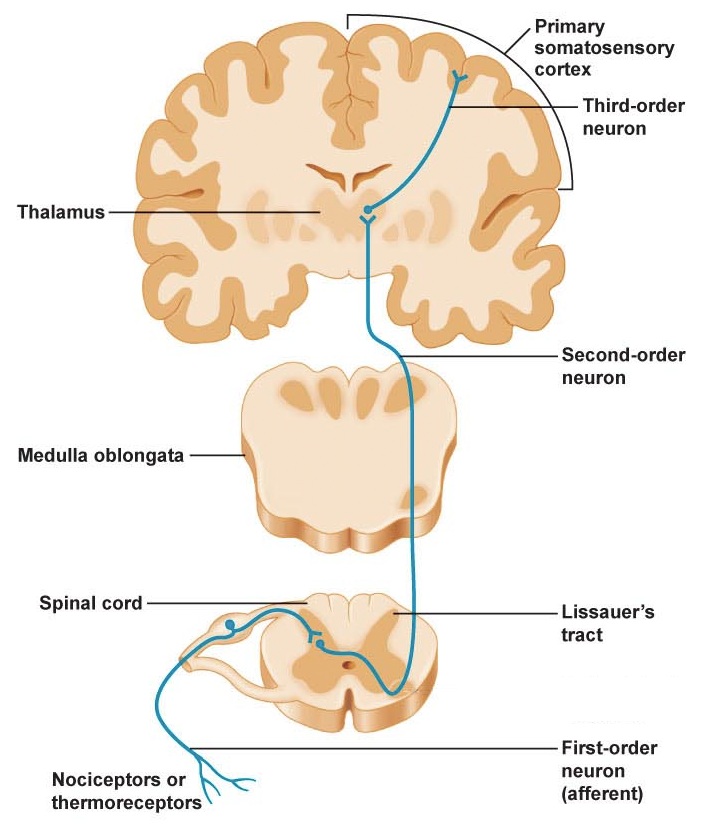Answer: People with a congenital insensitivity to pain do not experience pain.
Pain is a normal sensation that serves a protective mechanism. Pain alerts us when there is something dangerous in our environment. When the body is exposed to a harmful stimulus, pain is the normal reaction to alert our body to move away from that harmful stimulus.
For people with a congenital insensitivity to pain, or CIP, they do not experience pain. As a result, their body is not made aware of the damaging stimuli around them. As a result, they may go through life with severe injuries such as broken bones or dislocated joints without ever noticing. The life expectancy of people with CIP is often shortened due to the condition, and many of them die in childhood (The Five Senses and Beyond: The Encyclopedia of Perception)
In congenital insensitivity to pain, somatosensation is generally intact except for temperature and pain sensation. They still have normal fine touch discrimination and pressure sensation. This indicates there may be a specific injury to the anterolateral system, the ascending somatosensory pathway that sends temperature and pain information into the brain.
There is a strong genetic component associated with CIP. In particular, there is a malfunctioning voltage-gated sodium channel subunit, Nav1.7. Voltage-gated sodium channels are expressed throughout excitable neurons, and are responsible for propagating neuronal action potentials along an axon. In the case of a defective Nav1.7, the pain sensing neurons at the skin surface (nociceptors) are unable to send action potentials to the central nervous system. This is why the brain does not experience the pain, and cannot send an appropriate avoidance response to the painful stimulus.
Due to the effect on voltage-gated sodium channels, congenital insensitivity to pain blocks detection of painful stimuli in the same manner as lidocaine.
In many ways, congenital insensitivity to pain is the opposite of a condition like hyperalgesia, where a person's sensitivity to painful stimuli is increased.
One possible avenue for treatment would be to introduce the patient to an opioid receptor antagonist such as naloxone. The normal brain uses opioid receptors to block painful sensations through activation of the descending pain pathway. By introducing an antagonist to this opioid pathway, painful stimuli might be able to be propagated into the brain. This has been demonstrated to be effective in both humans and rodent models for CIP ("Endogenous opioids contribute to insensitivity to pain in humans and mice lacking sodium channel Nav1.7".)









